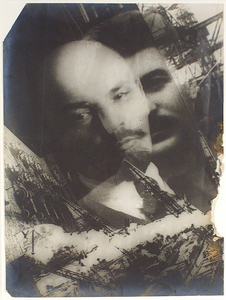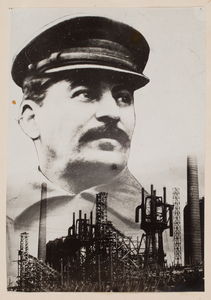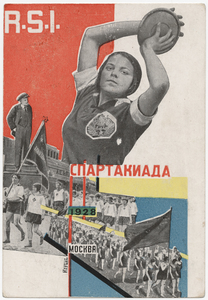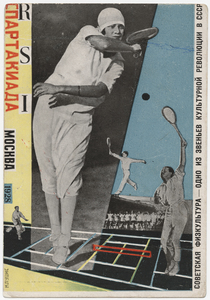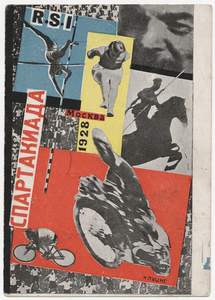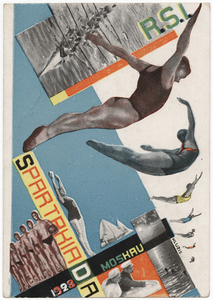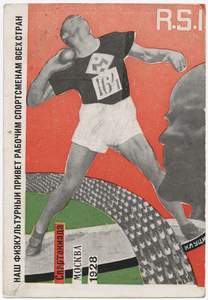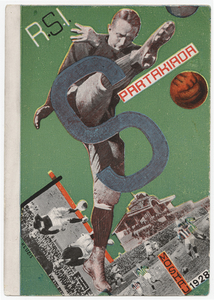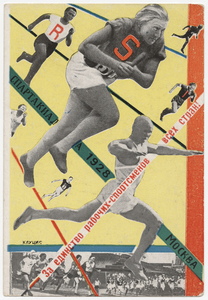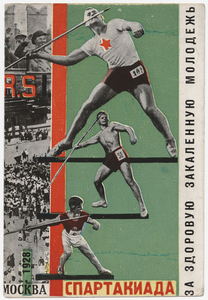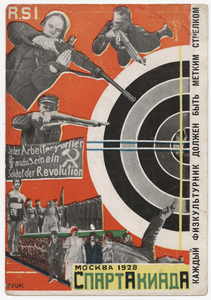Gustav Klutsis was born in Latvia in 1895. Following two years of art school, he was drafted into the Russian Army, and took part in the 1917 overthrow of the Tsar. In 1919, Klutsis resumed his art education in Moscow in the studio of Kazimir Malevich. Acclaimed for his spatial constructions, as well as for his designs of practical structures like kiosks, tribunes, and radio-orators, Klutsis became a professor of color theory at the Constructivist school VKhUTEMAS (Higher State Artistic and Technical Institute) in 1924. In addition to being an accomplished Constructivist, by the early 1920s, Klutsis became a pioneering developer of photomontage, a method of cutting and pasting together photographs. This process, eagerly adopted by other Russian avant-gardists, was used for a variety of artistic and graphic purposes, mainly supporting the ideology and programs of the emerging Soviet state. In 1920, Klutsis encouraged Valentina Kulagina, then a young painting student at the State Free Art Studios, to enter VKhUTEMAS, where he taught. The following year, the two artists married. Throughout the 1920s, they lived in the school's headquarters, which also housed artists Aleksandr Rodchenko, Varvara Stepanova, Sergei Senkin, and poet Aleksei Khruchenykh. A devoted supporter of the Bolshevik regime and a member of the Communist Party, Klutsis was nonetheless arrested in 1938. He was killed not long after his arrest at the Butovo prison near Moscow.
Within the context of the early Soviet Union, when politics was infiltrating the artistic and intellectual communities, it is an important discovery that artists such as Klutsis were nonetheless able to produce and experiment with art photography. Though Klutsis and Kulagina worked successfully as official poster producers and as contributors of the visual rhetoric of Stalinism, they also created introspective and personal art using the camera--including a number of striking superimposed photographs of the couple together and photomontage portraits of each other.



